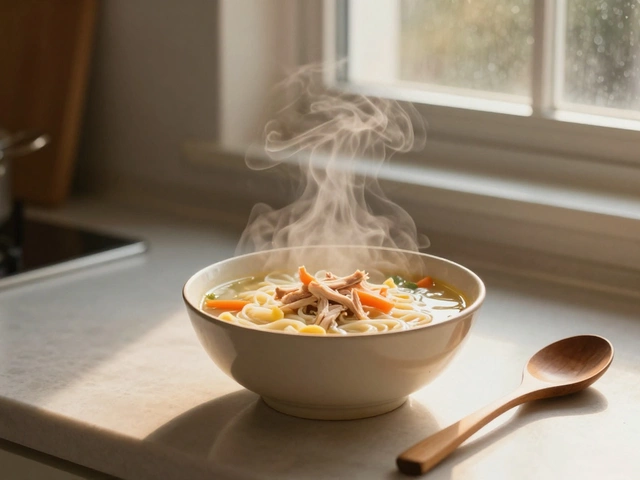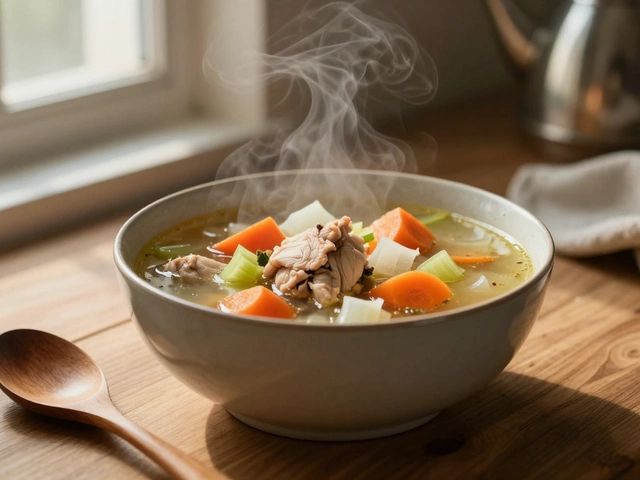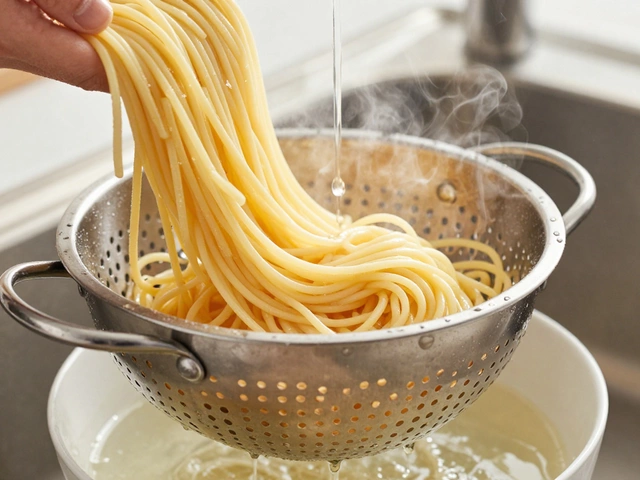Have you ever thought you were eating gluten-free, only to get hit with a wave of symptoms later? You’re not alone. The tricky thing about gluten is it can hide where you least expect it—right in foods most folks assume are safe. Forget fancy gourmet meals; we’re talking about your everyday snacks, condiments, even drinks. People trying to avoid gluten (whether because of celiac, a sensitivity, or just curiosity) end up getting blindsided by things that often don’t even sound like they have wheat, barley, or rye. Why does this keep happening, and what food products are the sneakiest offenders? You’ll be surprised.
The Everyday Eats You’d Never Suspect
Picture this: you’re at the grocery store, reading labels like a hawk. You skip the obvious wheat bread and bagels. But then you pick up a can of soup or a box of instant oatmeal, totally sure you’re doing everything right. Here’s where things get twisty. Even foods sitting in the “healthy” or “natural” section aren’t always free and clear of gluten.
- Oats: By themselves, oats should be gluten-free. But here’s the curveball. Oats are often processed in factories that handle wheat, meaning cross-contamination happens more than anyone talks about. “Gluten-free oats” aren’t just a marketing ploy—they’re actually tested and handled separately. Don’t assume your regular oatmeal is celiac-safe unless it’s labeled accordingly.
- Soy Sauce: Classic soy sauce? Not gluten-free. Surprise! Wheat is the second main ingredient in most brands, making them a no-go unless labeled otherwise. If you want a gluten-free swap, tamari or coconut aminos are better choices, but always check the label first. Some “tamari” sauces sneak gluten back in with added flavorings or thickeners.
- Processed Meats: Hot dogs, deli turkey, even some bacon brands can be hiding gluten via fillers, spices, or flavoring mixes. Wheat-based ingredients bulk up products and keep costs down. Stick to meats that are clearly marked gluten-free, or buy plain fresh cuts when you can and season them yourself.
- Fries and Chips: Potatoes? They’re gluten-free. But if they’re battered before frying or share oil with breaded products, gluten contamination is almost guaranteed. Some chips even use wheat starch for that addictive crunch. Always look for a gluten-free seal and ask questions at restaurants before you order a side of fries.
- Salad Dressings and Marinades: Vinegar, mustard, and oil might be fine, but commercial dressings and sauces love to throw in wheat-based thickeners, flavor enhancers, or soy sauce. Homemade options are safer unless you find products earnestly screened for gluten.
- Candy and Sweets: Chewy candies like licorice, gummies, and even some chocolates can carry gluten in the form of wheat flour or barley malt. The only way to be sure? Read the label every time, because manufacturers change recipes often. One year’s gluten-free treat is next year’s stomach ache.
- Ice Cream: Vanilla ice cream would seem innocent, but add-ins like cookie dough, brownies, or certain stabilizers can bring gluten in through the back door. And don’t forget about cones, which are almost always wheat-based.
- Instant Coffee: Most pure coffee is safe, but instant coffee occasionally uses malted barley for flavor, and some flavored creamers rely on wheat-based additives. For super-sensitive folks, plain ground beans are the way to go.
- Energy Bars: Health food or granola bars love to include malt flavoring or use wheat flour for texture. Even bars labeled “natural” or “organic” may not be gluten-free. “Gluten-free” on the label is a must.
Other offenders hide in odd places like soy or teriyaki sauces, imitation crab (surimi), and even breakfast sausages. Pre-marinated meats from the butcher counter and “vegetarian” burgers often contain wheat-based fillers to hold them together. Wheat and barley show up as caramel color, dextrins, and modified food starch (if the source isn’t specified), especially in the U.S. “Natural flavors” and “spices” can also mask gluten, so contacting the manufacturer is a smart move if you’re unsure about a packaged product.
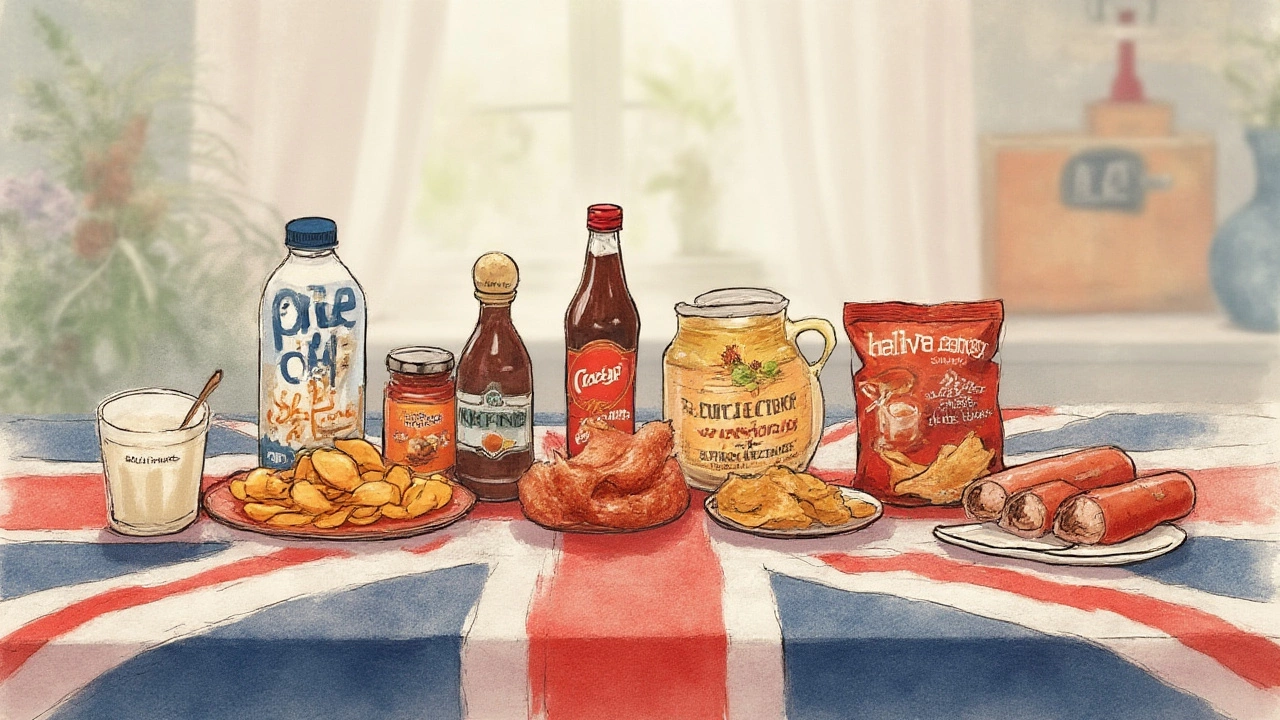
More on Label Reading and Product Traps
If you’re counting on labels to keep you safe, you’re doing the right thing, but there’s a lot to know beyond looking for “wheat” in the ingredients list. Food made in the U.S. only has to highlight the top eight allergens (wheat, soy, milk, etc.), but barley and rye don’t get the same treatment. Gluten can sneak in as barley malt, malt vinegar, seitan, durum, triticale, or even farro—none of which are required to be labeled in bold. So, whenever you see “malt” of any kind (even “maltodextrin” if you’re not sure of the source), stop and check twice. Some gluten ingredients hide in technical-sounding words like “hydrolyzed vegetable protein,” “vegetable gum,” or “brown rice syrup” (sometimes fermented with barley enzymes).
Imported foods add another layer of challenge. Some countries don't have the same label transparency. If you pick up an Irish stout or a French madeleine, for example, don’t count on the same allergen call-outs. Gluten can end up in pre-made Asian sauces, bouillon cubes, or curry pastes. And don’t even get started on beer—nearly all the classic brands use barley malts; labeled “gluten-removed” beers may not be safe, since current tests can miss small particles that still trigger symptoms.
Take oats again. Even “gluten-free” oats can cause problems for roughly 1 in 5 people with celiac. There’s a protein in oats called avenin that sometimes triggers the same immune response. Plus, regulations around what “gluten-free” actually means aren’t always as strict as people expect. In the U.S., the FDA allows a product labeled “gluten-free” to contain up to 20 parts per million of gluten. For comparison, that’s about a breadcrumb in a piece of toast, but for some, it’s enough to get sick.
If a label says “manufactured in a facility with wheat,” this is an alert for possible cross-contamination, and it’s up to you to decide if you want to take the risk. Those with celiac should avoid these, but some people with sensitivities might tolerate them. Baked goods, cereals, seasoning packets, and even vitamin supplements regularly make this kind of claim.
Here are some tips for label reading if you’re worried about hidden gluten:
- Scan for words like wheat, barley, rye, spelt, triticale, farro, malt, and brewers yeast.
- Check if common additives (like flavorings, caramel color, starches) list a source. If it says “wheat,” it’s out. If no source is listed, call or email the brand.
- Look for third-party certifications, like the Gluten-Free Certification Organization (GFCO), which tests products down to 10ppm gluten. Their logo means strict testing is done.
- Be wary of “gluten-removed” beers. “Gluten-free” beers use alternative grains, but “gluten-reduced” may still trigger symptoms.
- If a food says “contains wheat,” but is labeled “gluten-free,” that’s likely a legal quirk—wheat starch can be processed to remove gluten, but this isn’t always 100% foolproof.
Restaurants, too, are tricky territory. Even if you see “gluten-free” on the menu, shared grills, toasters, and prep spaces mean gluten particles can stick around. French fries and chicken nuggets, for example, might share the same fryer basket. Ask to see the packaging or allergen binder if you really need to know; good kitchens won’t mind showing you. Always say you have celiac disease or a “medically necessary” reason—it helps servers take extra care.
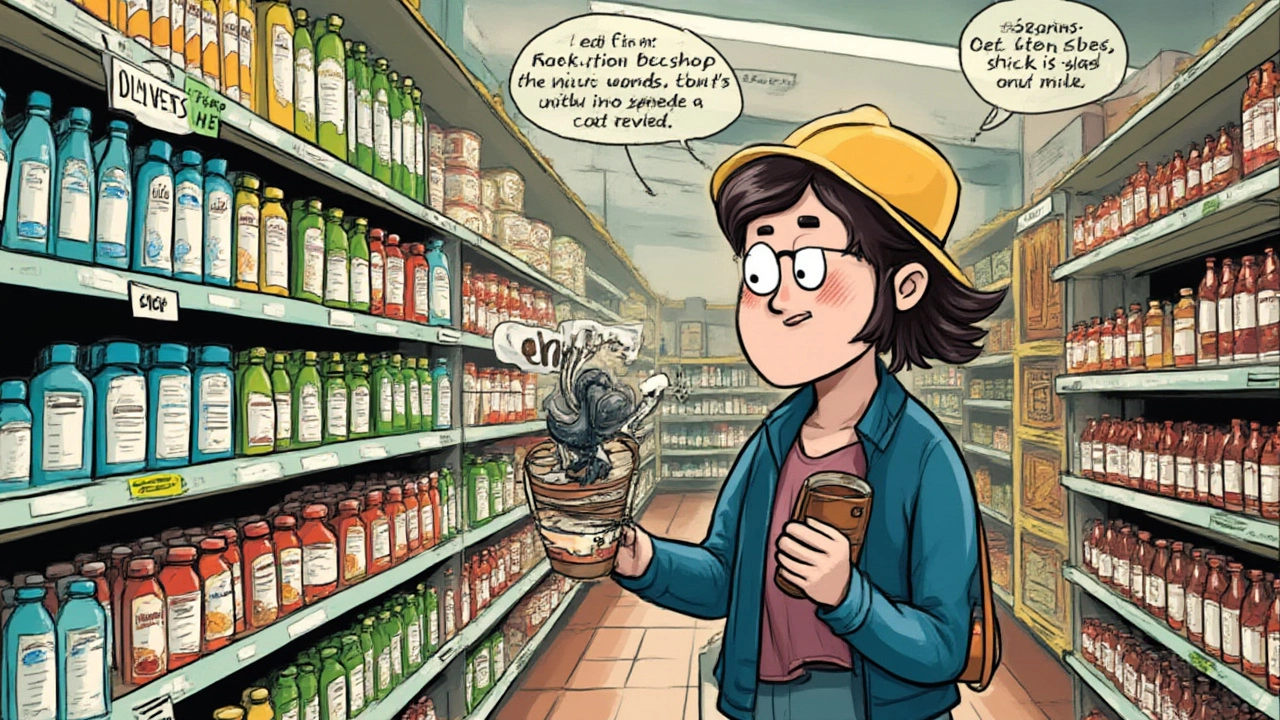
Gluten-Free Myths That Can Make You Sick
Plenty of common wisdom about eating gluten-free just doesn’t hold up. People think if it isn’t bread or pasta, it has to be okay. But there are several persistent myths that land people in trouble again and again, even those who’ve been gluten-free for years.
- Myth: All grains except wheat, barley, and rye are safe. Reality: Cross-contamination is a huge problem. Bulk bins, packaging plants, and bakeries all cause gluten to hop from food to food. Millet, buckwheat, cornmeal—all can be risky unless labeled gluten-free.
- Myth: Sourdough and sprouted wheat bread are okay for sensitivities. Reality: Fermentation reduces but doesn’t eliminate gluten. Even small amounts are enough to cause issues for someone who really needs to avoid it.
- Myth: Wheat starch is always unsafe. Reality: Some gluten is removed from wheat starch, and in places like Europe, you’ll find “codex wheat starch” in gluten-free foods. However, not all react the same. Check with your doctor before experimenting.
- Myth: If a restaurant offers gluten-free, it must be safe. Reality: Shared prep areas are everywhere. Always ask how things are prepared (for example, is your bun toasted on the same surface as wheat bread?).
- Myth: Spirits like whiskey and bourbon aren’t gluten-free. Reality: Distillation removes gluten proteins, but some ultra-sensitive folks avoid them anyway. Flavored vodkas and mixers can add it back in, so double-check those labels.
- Myth: All vinegar is gluten-free. Reality: Distilled white vinegar is fine, but malt vinegar (common in UK or on chips) is made from barley and definitely not gluten-free.
- Myth: You don’t have to worry if it’s a tiny amount. Reality: For anyone with celiac disease, even a crumb is enough to fire up an autoimmune response, whether you feel symptoms or not.
So what actually is the safest route? First, eat mostly naturally gluten-free foods—fruits, veggies, fresh meat, rice, beans, and dairy—where nobody can sneak in mystery ingredients. If you’re craving pasta or baked goods, buy products from companies whose sole mission is gluten-free. For example, brands like Enjoy Life, Schar, and Canyon Bakehouse only handle gluten-free foods, so cross-contact on their production lines is minimal.
Cooking at home gives you more control. Use separate utensils, colanders, toasters, and cutting boards if your house isn’t 100% gluten-free, because crumbs hide everywhere—yes, even in the butter dish or peanut butter jar. For shared kitchens, keep your gluten-free staples on marked shelves and store bread in sealed containers. It seems extreme, but after a few accidental glutenings, it’s worth it.
Travelers, plan ahead—carry snacks and find restaurants with dedicated gluten-free fryers and menus. Some people even call ahead to verify processes; it can make the difference between a great trip and days of discomfort.
Knowledge and vigilance are your best friends when avoiding gluten pitfalls. Surprises keep popping up, but every year the gluten-free market gets better, clearer, and safer. When in doubt, don’t eat it—your body will thank you ten times over.

